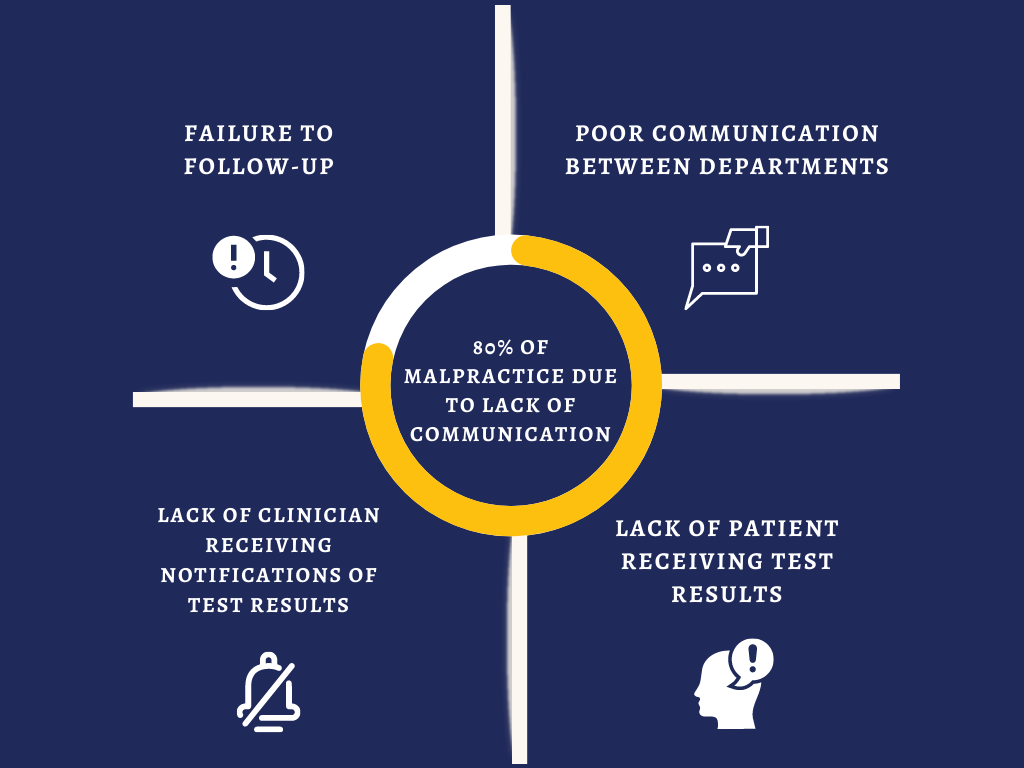
Introduction
Increasing provider engagement is crucial to improving overall health outcomes for patients. Currently, provider engagement is lacking. For instance, different departments often do not communicate with each other, which can lead to worse outcomes for patients. Furthermore, physicians may be overwhelmed with other tasks and forget to follow up with patients. Even if they do follow up, they may be unable to meet them before a major health episode occurs that could have been prevented. Additionally, health IT professionals need to provide data in an efficient and personalized manner. This allows healthcare professionals to make performance-based decisions that improve patient outcomes and business performance. Healthcare professionals being more engaged in the healthcare process allows patients to receive better care and prevents more serious health-related complications in the long term.

Background
Lack of Follow-Up & Preventive Care
Physicians need to follow up on patients to prevent adverse outcomes and legal problems1. In fact, 80% of malpractice cases were due to issues in communication1. This is due to different departments not being able to communicate with one another. Furthermore, there is a lack of an effective test result tracking system. This can delay a patient and clinician from receiving updates on test information, diagnostics, and critical results. Additionally, physicians need to follow up continuously with patients, especially if the patient is at risk for chronic diseases. About 3,000 heart failure hospitalizations occur every day2. 800 of those patients are readmitted within a month, and 400 of them will die within 5 years2. Doctors can take necessary action early on in treatment in order to prevent these complications. Therefore, the lack of provider engagement in following up with patients can lead to preventable increased risk.

Lack of Effective Data
Providers are given large amounts of data but are often unable to use it for useful decision-making outcomes. Interestingly, 80% or more of healthcare executives believed that high-quality data is crucial to making informed decisions, however, only 20% trusted the data they were given3. This is due to the lack of regulation on the data, and that 80% of the time data scientists spent is on cleaning the data before it can be used3. This is concerning because ideally, this data could create AI or machine learning tools that can assist healthcare professionals, rather than increase their burden. Health IT professionals need to provide more effective and useful data so that providers can increase business operations, allocate resources accordingly, and improve outcomes for patients3.
Solution
Increased Follow-Up with EHR Alerts
Physicians can increase their engagement if they are provided effective tools that alert them on necessary follow-ups. AI can be useful in alerting physicians on findings that need their attention and a follow-up recommendation from patients4. This integrated EHR workflow lead to 5,000 physician interactions in 13 months, and 2,400 follow-ups completed4. It’s also important to note that the AI does not make any decisions on the care that the patient should receive. It simply alerts clinicians of comments left by radiologists that may require a follow-up. Doctors can choose to close out the alert without additional follow-up or go through with the alert. If they are unable to reach the patient, then the patient will receive a letter that requires them to reach out. This technology decreases settlement costs that result due to missed follow-ups, and decreases missed diagnoses.

Another area that requires follow-up from physicians is medication. Lack of medication tracking can lead to medication errors and adverse effects for patients. Physicians can prevent this with an electronic bar code system5. Physicians can scan a barcode on the patient’s wristband when prescribing and administering medicine5. The care team at the hospital will receive medication-related alerts when there are adverse effects, inconsistent dosages, and medication errors. Furthermore, if a patient experiences complications due to symptoms from a previously prescribed medication after a visit, then the doctor who prescribed it and the rest of the care team should be alerted via the EHR system so the necessary response can be taken. This will ensure the patient receives the proper follow-up and treatment plan. Therefore, medication tracking is an effective tool to increase engagement among providers and provide the tools needed to receive updates and follow-up on patients.
Preventive Care
Physicians can take measures for preventive care if given tools that lead to increased provider engagement. Implantable cardiac devices can prevent some of the most common chronic diseases. This personalized device can predict heart failure approximately 34 days before they occur and alerts doctors of any adverse effects2. Furthermore, if doctors receive real-time alerts on a patient’s worsening condition, they can treat them earlier and prevent worse outcomes when it is too late. It is crucial that the technology doesn’t just send doctors data points. The device must have an algorithm that analyzes the findings and alerts doctors of any crossed threshold2. This allows physicians to make actions and treatment plans that provide preventable care and increased health outcomes for patients. Therefore, doctors can react when there is still time to when provided real-time updates.

Translating Data Into Performance
Providers need data presented in an efficient and useful manner. Health IT professionals need to identify who is using the data they provide. For instance, nurses and clinicians need frequent feedback on response times while senior professionals need regular data on safety issues and overall patient experience6. Next, they must create value for the data by tracking trends and setting personalized goals. This will make the data readable and trackable. Furthermore, different departments need data integrated into their specific priorities6. Different leads have different priorities ranging from patient feedback to patient safety. Lastly, it is important that the information is provided in a useful format. For instance, CEOs need report cards with color-coding while senior managers prefer figures and visual trends6. Increased provider engagement results in strategic decisions on how to allocate funding, resources, and training for improved patient outcomes.
Conclusion
Increasing provider engagement is crucial to improving patient health, reducing data overload faced by physicians, and resulting in increased performance. Health IT professionals need to create solutions that provide physicians with alerts to follow up with patients, real-time alerts that notify worsening conditions, and create personalized data for decision-making processes. This will increase provider engagement which will lead to healthier and more cost-effective outcomes.
References
- https://www.legalnursepdx.com/delays-in-treatment-a-great-danger-to-physicians-and-patients-alike/
- https://www.fastcompany.com/90726572/a-solution-to-help-physicians-take-preventative-decisive-action-against-heart-failure
- https://www.fiercehealthcare.com/tech/majority-healthcare-executives-don-t-trust-their-organization-s-data-survey-finds
- https://www.radiologybusiness.com/topics/healthcare-management/business-intelligence/ai-incidental-imaging-findings
- https://www.woclleydon.com/blog/hospital-adopts-electronic-medication-tracking-system/
- https://hbr.org/2022/03/fixing-data-overload-in-health-care